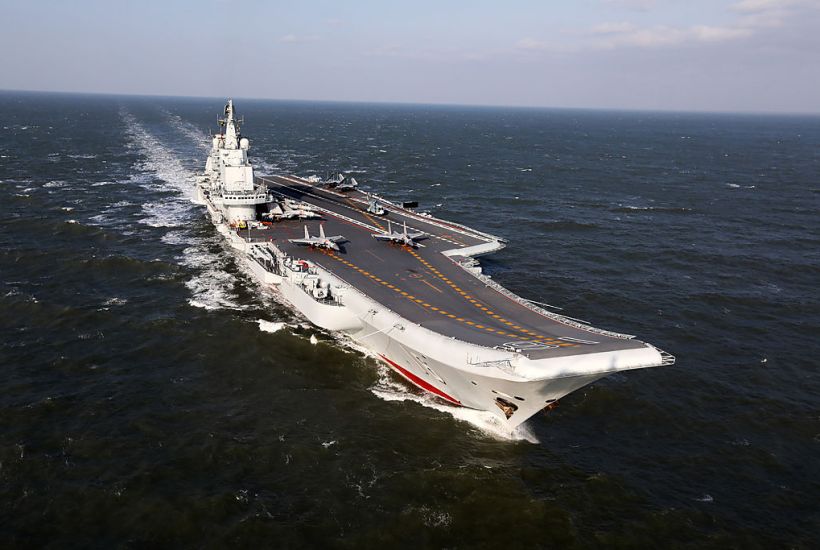With the world’s attention currently focused on events in North Korea and the never-ending crisis of the Syrian civil war, there is another potential flashpoint which could lead to great power conflagration, namely that of the South China Sea.
Just as China’s economy has been growing so too has its military power—it recently launched its first home-built aircraft carrier, due to come into service around 2020, and it is believed that China may be launching as many as four new carriers. What is worrisome about all this is that China claims the vast majority of the South China Sea as its ‘historic waters,’ with ridiculous claims as far south as the Natuna Islands of Indonesia which are more than two thousand kilometres away from the Chinese mainland.
Additionally, China has been building artificial islands in the South China Sea to bolster its claims, engaging in a policy of ‘salami slicing’; incrementally taking small amounts of territory such that each small gain is not enough to warrant a direct confrontation. Recently, the US-led its first ‘freedom of navigation’ exercises through the South China Sea under the Trump Presidency. This involved sailing a guided missile destroyer, the USS Dewey, within 12 nautical miles of these artificial islands –under international law a country’s territorial waters extend out 12 nautical miles from its shoreline.
There are good reasons why America would do this—firstly it is in America’s interests to keep a vital waterway open as some $5 trillion worth of goods sail through the South China Sea annually, secondly it must demonstrate to its allies in the region that it is serious about protecting them from a potential aggressor nation and thirdly to deter other would-be aggressor nations from doing the same thing in other parts of the world.
While diplomacy has its merits and in Winston Churchill’s words ‘better to jaw-jaw than war-war,’ it must be remembered that for talks to work, all parties have to conduct them in good faith. Talks with China regarding the South China Sea go nowhere—as China simply uses the talks to buy time and in the meantime change ‘facts on the ground.’ For example during Obama’s presidency, China had promised not to militarise the South China Sea, and it also reneged on its 2012 agreement to withdraw from Scarborough Shoal. Whilst freedom of navigation exercises by the US Navy are an essential component of showing China that they will not control an international waterway, by themselves they are simply not enough.
What then can the international community do in order to send an unambiguous signal to China that it will not be allowed to control a vital international waterway? One possibility is for more external actors to conduct freedom of navigation exercises through the South China Sea. In addition to Australia and Japan joining the United States in sailing within 12 nautical miles of these artificial islands, we should encourage more G7 nations to participate in these as well. As strong as though America is, it cannot (and should not be expected to) solve the world’s problems on its own.
While it is a good sign that the G7 recently called for the demilitarisation of features in the South China Sea in a communiqué, it must also be remembered that talk is cheap and must be followed up by action. The post-war prosperity enjoyed by the developed world and, by extension, the world as a whole has been in large part due to freedom of navigation of the seas, which has been underwritten by the United States. In joining America in conducting freedom of navigation exercises, the developed world would also be showing an aggressive, authoritarian state that simply claiming large swathes of open water as its own is unacceptable behaviour.
Another possibility to reign in China’s aggressive posturing in the South China Sea is to arm China’s neighbours in the region with defensive weaponry capable of deterring the Chinese navy from venturing too far into its neighbours’ waters. Vietnam has already started to do this by ordering 36 Su-30MK2 fighters and in 2009 spend $2 billion for 6 Imperial Kilo class diesel-electric submarines.
One further possibility to keep China in check is to place the THAAD missile system in Taiwan so that China’s military adventurism is kept in check—we need only to look at China’s anger towards South Korea to realise that China is afraid of THAAD. Currently, the Philippines navy is the weakest in South-East Asia and more must be done to modernise it so that Filipinos can stand up for themselves—China only started bullying the Philippines after the American navy left in 1995.
It is true that such actions could inflame China, but it must also be remembered too that China wants to gain territory without actually fighting—the essence of Sun Tzu’s ‘Art of War’ is that of winning without going to war. War, whilst always a possibility in international relations, would harm China far more than it would the United States (China has not fought a war since its bruising encounter in 1979 with Vietnam, and it is unlikely that the Chinese economy could sustain a US naval blockade.
It must be noted that as a result of conducting freedom of navigation operations within the South China Sea, the United States has already realised that there is a price to pay in relations with China—one specific example would be that China’s cooperation over North Korea (if it were ever genuine) will be even less. Ultimately though, the United States interests and those of its allies and the world at large are best served by keeping the South China Sea an international waterway.
Simon Louie is a freelance defence writer.
Got something to add? Join the discussion and comment below.
Got something to add? Join the discussion and comment below.
Get 10 issues for just $10
Subscribe to The Spectator Australia today for the next 10 magazine issues, plus full online access, for just $10.


























Comments
Don't miss out
Join the conversation with other Spectator Australia readers. Subscribe to leave a comment.
SUBSCRIBEAlready a subscriber? Log in